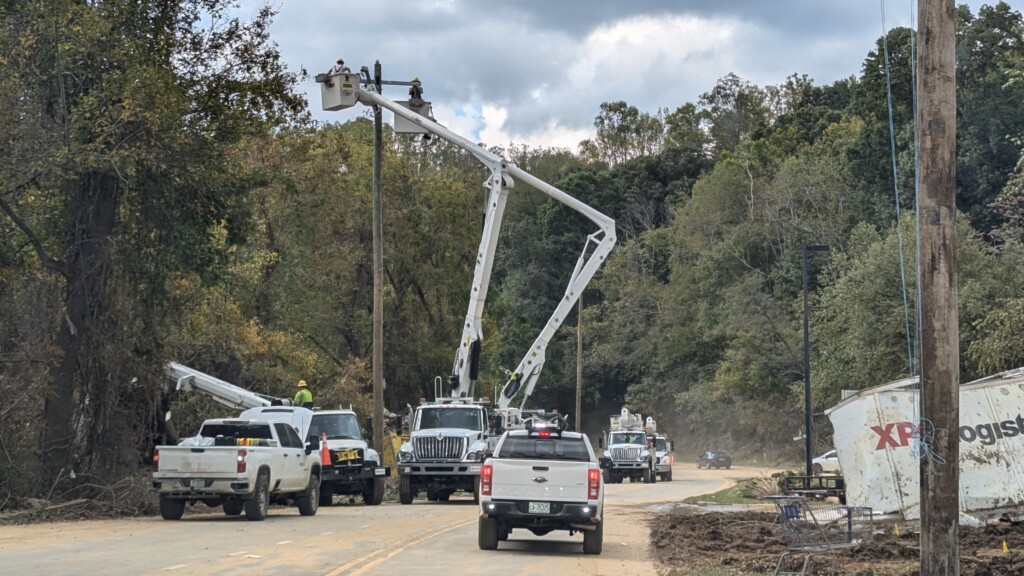2024 Charlotteans of the Year: Duke Energy Line Workers
By air, land, and any means necessary, they restored power to the places that needed it most

Even before the rains came, Duke Energy prepared for something bad. The utility began to move water through its dams on the Catawba-Wateree River Basin to mitigate expected flooding from Hurricane Helene.
When the storm arrived, it brought a disaster of a magnitude unseen in western North Carolina for decades: widespread floods that washed away homes, businesses, and lives, and left behind rubble and mud. Tens of thousands struggled to acquire basic needs like food, water, and shelter. Rebuilding would require power.
“Helene’s winds were powerful and destructive, and its rains were historic,” said Jason Hollifield, Duke Energy’s storm director for the Carolinas, where 2.7 million customers lost power at some point. “We started monitoring Helene when it was first identified and prepared well in advance for its impact. Even so, the damage is extensive, and it could take days to restore power to all customers.”
So Duke got to work. In the weeks that followed, the Charlotte-based company dispatched 21,000 field personnel to repair and rebuild damaged infrastructure throughout the Carolinas. They replaced an estimated 2,000 transformers and 11,000 poles. Within 48 hours of the storm’s sweep through the mountains on the night of Sept. 26, Duke had restored power to 1.1 million customers, concentrating on the “backbone” of its grid. By Oct. 5, that number had risen to 2.3 million.
Tougher days lay ahead. Restoring electricity to small communities deep in mountain gorges and hollers was hard, slow, and exhausting. “As more of our workers move into the areas hardest hit by Helene,” Hollifield said, “they’re encountering more severe damage on a larger scale than we’ve ever experienced.” To many of the line workers, these weren’t just customers. They were friends and neighbors—or family. Line workers helped guide teams down washed-out mountain roads to where they knew people lived. Duke used drones and helicopters to survey areas inaccessible by vehicle or foot. Choppers flew in 50 power poles.
As of this writing in late October, the work continued. About 1,000 people still lacked power in areas where damage was worst. For those of us accustomed to daily life with frozen and refrigerated food, light after sundown, chargeable toothbrushes, heating and air conditioning, and other luxuries of an electrified world, stop and consider: No power. For a month.
Now imagine the relief that comes when the lights turn back on—and acknowledge the people who, while merely doing their jobs, show us what and who “essential personnel” are.







